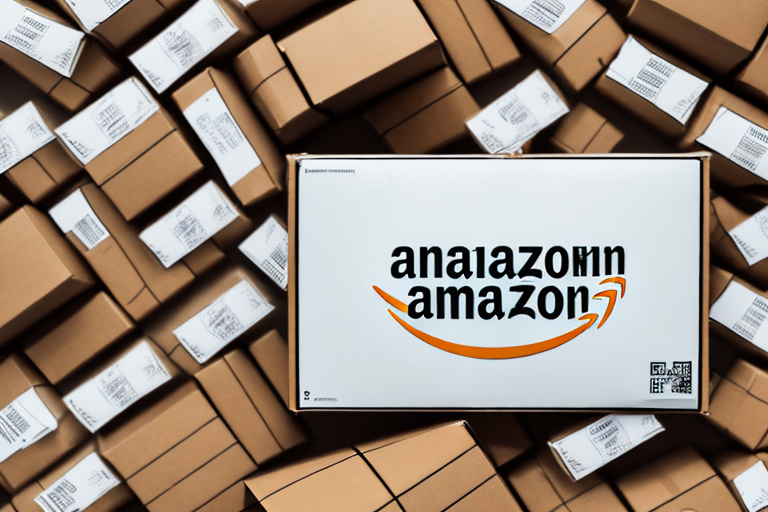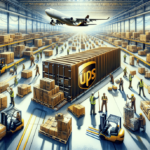Maximizing Efficiency in Supply Chain Debris Removal
Maintaining a clean and debris-free supply chain is essential for efficient operations and fostering a safe, healthy work environment. Supply chain debris removal involves effectively eliminating unwanted materials or waste that accumulate throughout the supply chain. Neglecting this process can hinder overall supply chain efficiency, escalate costs, and pose significant risks to the safety of both personnel and equipment.
Understanding the Importance of Debris Removal in the Supply Chain
Debris within the supply chain can originate from various sources, including packaging materials, equipment, pallets, and the products themselves. If debris isn't removed promptly, it can obstruct the flow of goods and materials, leading to logistical delays, increased machinery downtime, and higher maintenance and repair costs. According to a 2023 ShipScience Supply Chain Efficiency Report, companies that prioritize debris removal experience up to a 20% increase in operational efficiency.
- Packaging Materials: Wooden pallets, crates, and boxes that can break or splinter.
- Damaged Product Packaging: Plastic wraps, banding, and discarded labels.
- Transport Debris: Tire fragments and materials from vehicles.
- Human Error: Accidental drops or improper disposal of waste materials.
Additionally, debris accumulation presents safety hazards, such as slips, falls, or equipment damage, which can lead to severe injuries or accidents. Effective debris removal not only ensures the safety of workers and machinery but also enhances overall productivity and reduces operational costs. Regular debris management practices help identify potential supply chain issues, such as damaged packaging or faulty equipment, allowing for timely interventions and improvements.
Common Sources of Debris in the Supply Chain
Packaging materials are among the most common sources of debris in the supply chain. Items like wooden pallets, crates, and boxes are frequently used but can easily degrade, resulting in wood debris. Furthermore, damaged product packaging, including plastic wraps, banding, and discarded labels, significantly contribute to debris buildup.
The transportation process is another significant source. During transit, products may shift and become damaged, leading to loose pieces of product or packaging material. Additionally, trucks and other vehicles can shed tire debris or other materials on the road, which may be inadvertently reintroduced into the supply chain by subsequent vehicles.
Human error also plays a role in debris accumulation. Workers might accidentally drop or spill products or packaging materials or fail to dispose of waste properly. In some instances, intentional littering or improper disposal of materials can exacerbate debris issues within the supply chain.
The Risks and Consequences of Neglecting Debris Removal in the Supply Chain
Failure to address debris removal can lead to numerous adverse outcomes, including supply chain disruptions, increased maintenance and repair costs, regulatory compliance challenges, and heightened safety risks for workers. Accumulated debris can cause equipment malfunctions, machinery damage, prolonged downtime, decreased productivity, and reduced accuracy in order fulfillment.
Moreover, neglected debris removal can have detrimental environmental impacts. Debris left within the supply chain can contribute to pollution and harm wildlife, leading to legal repercussions and damaging a company's reputation. According to the Environmental Science Association, effective debris removal practices can reduce environmental impact by over 25%. Therefore, it's imperative for companies to prioritize debris removal in their supply chain management to mitigate these risks.
Best Practices for Effective Debris Removal in the Supply Chain
To ensure efficient supply chain debris removal, organizations can adopt several best practices:
- Regular Inspections: Conduct routine inspections of supply chain facilities to identify and remove accumulating debris.
- Standardized Operating Procedures: Implement and enforce standardized processes to maintain a clean working environment, ensure regulatory compliance, and reduce associated costs.
- Employee Training: Provide comprehensive training to employees on the importance of debris removal and proper disposal methods.
- Proper Equipment: Equip workers with the necessary tools and machinery to facilitate effective debris removal.
- Continuous Improvement: Regularly evaluate and refine debris removal processes to enhance efficiency and effectiveness.
The Role of Technology in Streamlining Supply Chain Debris Removal
Advancements in technology play a pivotal role in optimizing supply chain debris removal. Automated equipment such as vacuum systems, conveyor belt cleaners, and air knives can drastically reduce the time and effort required for cleaning operations. Additionally, data-driven technologies like sensors and machine learning algorithms can identify debris hotspots and optimize cleaning schedules.
Drones are another innovative tool for debris management. Equipped with cameras and sensors, drones can swiftly survey large areas of the supply chain, identifying debris and potential hazards. This real-time data enables targeted cleaning efforts, preventing future debris accumulation. A study by TechSupplyChain highlights that drone technology can increase inspection efficiency by up to 40%.
Furthermore, technology enhances the safety of debris removal operations. Remote-controlled equipment and robots can handle hazardous areas, minimizing the risk of injury to workers. Virtual reality training programs also offer immersive training experiences, ensuring workers are well-versed in safety protocols and procedures, thereby reducing the likelihood of accidents.
Key Performance Indicators for Measuring Success in Supply Chain Debris Removal
Establishing Key Performance Indicators (KPIs) is essential for tracking the effectiveness of supply chain debris removal strategies. Important KPIs include:
- Time Spent Cleaning per Square Foot: Measures the efficiency of cleaning operations.
- Frequency of Inspections: Ensures regular monitoring and timely debris removal.
- Reduction in Equipment Downtime: Indicates improved maintenance and fewer breakdowns.
- Decrease in Safety Incidents: Reflects the effectiveness of debris removal in enhancing workplace safety.
Analyzing these metrics allows organizations to identify areas for improvement and implement corrective actions to optimize their debris removal processes. For instance, a reduction in safety incidents related to debris can demonstrate the success of implemented safety protocols and debris management strategies.
Overcoming Obstacles to Efficient Supply Chain Debris Removal
Several challenges can impede efficient supply chain debris removal:
- Lack of Awareness and Understanding: Workers may not fully grasp the importance of debris removal. Comprehensive training and education are crucial.
- Insufficient Equipment and Resources: Without the right tools and resources, debris removal efforts can be ineffective. Investing in appropriate equipment is essential.
- Communication Breakdowns: Poor communication between departments and stakeholders can lead to inefficient debris management. Establishing clear communication channels and regular meetings can mitigate this issue.
- Resistance to Change: Employees might resist new debris removal procedures. Implementing continuous improvement initiatives and involving workers in process design can help alleviate resistance.
Addressing these obstacles requires a multifaceted approach, including training programs, investment in necessary resources, fostering effective communication, and promoting a culture of continuous improvement to ensure debris removal is prioritized and executed efficiently.
Case Studies: Successful Strategies for Maximizing Efficiency in Supply Chain Debris Removal
Numerous organizations have successfully optimized their supply chain debris removal processes:
- Retail Giant: Implemented a standardized debris removal protocol, resulting in a 30% reduction in equipment downtime, a 20% decrease in maintenance costs, and a 90% reduction in safety incidents related to debris.
- Logistics Firm: Adopted automated cleaning equipment that cut cleaning times by 50% and saved over $100,000 annually in labor costs.
- Manufacturing Company: Established a daily debris removal schedule involving all employees, leading to a cleaner and safer work environment, reduced equipment breakdowns, and increased employee morale and productivity.
These case studies underscore the tangible benefits of effective debris removal strategies, including cost savings, enhanced safety, and improved operational efficiency.
Future Trends and Innovations in Supply Chain Debris Removal
The future of supply chain debris removal is poised to benefit from several technological advancements and evolving practices:
- Drones: The continued integration of drones for debris inspection and removal will enable faster and more comprehensive management.
- Predictive Analytics: Utilizing predictive analytics to forecast debris accumulation patterns will allow for proactive cleaning strategies.
- Robotics: Robotic systems will automate debris removal processes, reducing the reliance on manual labor and increasing efficiency.
- Circular Supply Chain Models: Emphasizing waste reduction and sustainability will drive innovations in debris management practices.
By embracing these trends and leveraging technology and data-driven insights, organizations can further enhance operational efficiency, reduce costs, promote safety, and establish a cleaner, more sustainable supply chain.
For more insights and resources on supply chain efficiency, visit the ShipScience website.






















